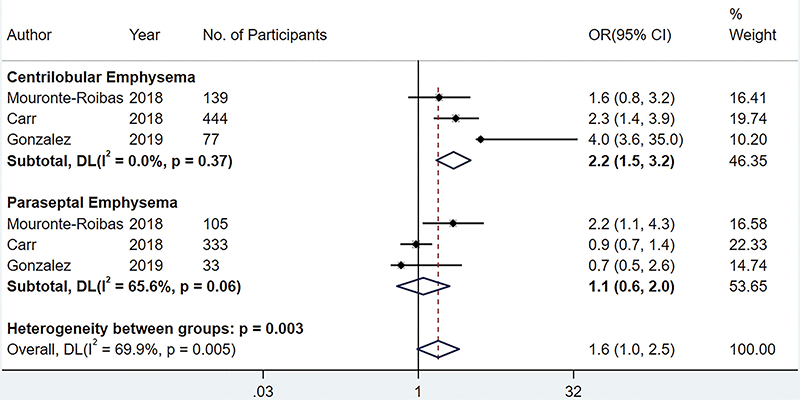Emphysema Severity Associated with Higher Lung Cancer Risk
Baseline CT may aid identification of high-risk patients needing further follow-up

CT-detected emphysema is linked to a higher risk of lung cancer, a risk that increases with emphysema severity, according to a new study published in Radiology.
Lung cancer is the primary cause of cancer-related death worldwide, with more than 1 million deaths each year since 2000. However, lung cancer risk can be reduced by identifying treatable risk factors, such as chronic lung inflammation, together with smoking, genetics, diet and occupational exposure.
Emphysema is a chronic respiratory disease characterized by damage to the alveoli, the tiny air sacs inside the lungs. Symptoms include shortness of breath, coughing with mucus, wheezing and chest tightness. There is no cure, but many treatments are available to help manage symptoms.
Cigarette smoking is one of the important shared risk factors of emphysema and lung cancer, as it enhances inflammation, DNA damage and accelerated aging. However, people with emphysema who have never smoked also have an increased risk of lung cancer, according to study co-author Marleen Vonder, PhD, from the Department of Epidemiology at University Medical Center Groningen in Groningen, the Netherlands.
“Other underlying mechanisms like genetic susceptibility, chronic inflammation or DNA damage and abnormal repair mechanisms, or a combination thereof, have been proposed to link emphysema and lung cancer,” she said.

Forest plot of the random-effects meta-analysis for the association between emphysema subtype (assessed visually only) and lung cancer. The pooled odds ratios (ORs) for lung cancer odds in the presence of centrilobular and paraseptal emphysema were 2.2 (95% CI: 1.5, 3.2 [P < .001]) and 1.1 (95% CI: 0.6, 2.0 [P = .71]). Adjusted factors in these mixed-effects models varied, as shown in Table E2 (online). Squares and horizontal lines represent estimates and 95% CIs, respectively, for each study part. Diamonds indicate effect sizes with 95% CIs. DL = DerSimonian and Laird.
Radiology 2022; 000:1-10 RSNA© 2022
Assessment Reveals Increased Risk
For the new study, Dr. Vonder and colleagues identified studies from three large databases on the association between emphysema and lung cancer. Analysis of 21 studies involving more than 107,000 patients found a connection between visual and quantitative CT assessments of emphysema and lung cancer.
“Our meta-analysis showed that not only visually assessed but also quantitatively assessed emphysema on CT is associated with lung cancer and that this risk increases for more severe emphysema,” Dr. Vonder said.
While the findings support a link between the two devastating diseases, more research is needed before any changes are made to clinical care, Dr. Vonder said.
“It is too early to conclude whether the presence of CT-defined emphysema leads to incremental and independent prognostic value over that of already known shared risk factors of emphysema and lung cancer,” she said.
The associations between CT emphysema and lung cancer were higher for categories of visual assessment compared to quantitative assessment. Despite this finding, Dr. Vonder said that quantitative assessment may ultimately gain favor over visual assessment, as it can be fully automated. She and her colleagues are researching this approach and validating its use in specified populations.
“Potentially, emphysema detected on a baseline CT scan could be used to select high-risk participants who would require more frequent follow-up lung cancer screening,” Dr. Vonder said.
For More Information
Access the Radiology study, “Association between Chest CT-defined Emphysema and Lung Cancer: A Systematic Review and Meta-Analysis.”
Access the related Radiology editorial, “Emphysema as a Predictor of Lung Cancer: Implications for Lung Cancer Screening.”
Read previous RSNA News articles on lung cancer: